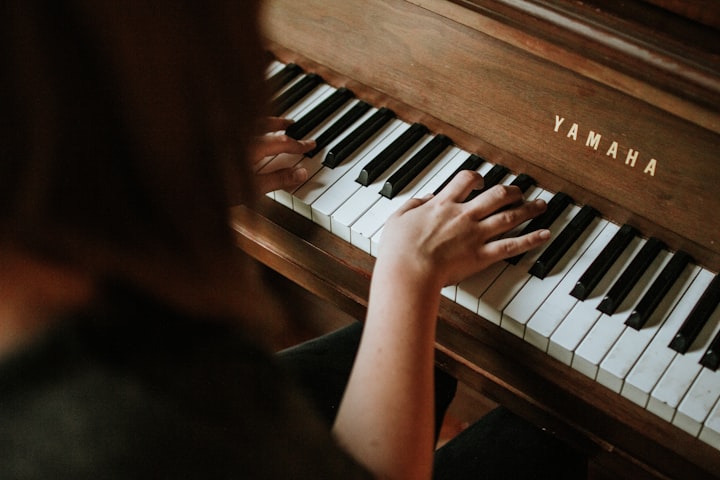'Goodbye Yellow Brick Road'
Elton John's Double Album Magnum Opus

Released in October of 1973, Elton John's first double album Goodbye Yellow Brick Road was a significant moment in Elton's career. Interestingly this great album was initially born out of not so great circumstances. Elton had wanted to record the album in a studio in Kingston Jamaica that had been used by the Rolling Stones for their album Goats Head Soup, but upon arriving discovered that the studio was ill-equipped and in a not-so friendly environment. Elton and his band only recorded one unusable take before abandoning the idea. They instead returned to the Chateau D'Hierouville in France where he had recorded his previous two albums.
The album opens with the sound of howling winds, church-like bells and ARP Synthesizer played by David Henschel before Elton's piano comes in with the instrumental "Funeral for a Friend," Soon the whole band joins in. The song changes gears and the vocals come in and the song becomes "Love Lies Bleeding" a more upbeat rocker. The first track lasts a whopping 11 minutes.
The Second song on the album is "Candle in the Wind." While on the surface about Marilyn Monroe, according to Bernie Taupin, The song could be about anyone whose life was cut short at the prime of their career such as James Dean, Montgomery Clift or Jim Morrison of The Doors. It was a single in England but not in America until 1987 when the live arrangement with the Melbourne Symphony Orchestra was released. In 1997 Bernie revised the lyrics to be about Diana Princess of Wales. This version became the biggest selling single of all time and was played by Elton at Diana's Funeral service.
Bennie and the Jets was released as a single in the US and topped the R&B charts much to the surprise and/or dismay of Elton who did not believe the song to be hit-worthy. In addition to the instrumental track the song also features live handclaps and audience noise Mixed in by Producer Gus Dudgeon.
Next is the albums title track which Bernie Taupin says was about his feeling out of his depth in the glamorous world he had found himself in. The song does bring to mind visually the yellow brick road in the 1939 film The Wizard of Oz but unlike Pink Floyd's The Dark Side of the Moon released earlier that same year (1973) no other supposed explicit connections are known to exist.
"This Song Has No Title" is a straightforward little ditty that as expected really does not make much lyrical sense and is basically filler.
"Grey Seal" was actually a song written and recorded back in 1970 and had appeared as the B-Side to the single Rock-and-Roll Madonna. It was re-recorded with the full band for the album.
"Jamaica Jerk-off" is a not so friendly tribute to the Island where Elton and the band had recently had such a miserable time.
"I've Seen That Movie Too" is a slow ballad where Bernie uses Hollywood allusions to a romantic interest.
"Sweet Painted Lady" is a poetic love song about prostitutes. On a personal note I didn't understand what this song meant lyrically until many years after I first heard it. it has very Parisian orchestration with an accordion and seashore noises in the background.
"The Ballad of Danny Bailey" is Bernie's account of the shooting death of a notorious gangster. Nigel Olsson's snare drum is used to simulate a gunshot at the beginning of the song. The song talks about how the title character was a folk hero beloved by the people of Kentucky. The outro is a showcase for Del Newman's Orchestral arrangements with heavy use of cellos and more majestic strings.
"Dirty Little Girl" is full of grungy guitar sounds and a slow yet precise drum beat and lyrically is pretty self-explanatory.
"All the Girls Love Alice" is a heavy rocker about a sixteen year old promiscuous female who dies in the subway, in addition to the band it features Ray Cooper on Tambourine who would at the end of the year permanently join the Elton John Band and backing vocals by Kiki Dee who would in a few years duet with Elton on the hit single "Don't Go Breaking My Heart." The car heard near the end of the song was actually being driven by drummer Nigel Olsson who recorded the sound of his car starting up. Nigel was and is very into cars.
"Your Sister Can't Twist but She Can Rock and Roll" is another eltonian tribute to the dance hits of the 50s and early 60s much like Crocodile Rock.
"Saturday Night's All Right for Fighting" is the albums best known rock number and is still played at virtually every Elton concert.
"Roy Rogers" is Bernie's sentimental love song to the king of the movie cowboys and the western genre in general. An unexpected touch is Davey Johnstone on steel guitar enhancing the western feeling of the song along with a sweeping cinematic string arrangement by Del Newman. The song ends with the sound of hoofbeats.
"Social Disease" is a pretty straightforward song describing an alcoholic bum with the sound of barking dogs, Davey's banjo and electric guitar add much grit to the song plus a saxophone solo from Leroy Gomez.
"Harmony" is clearly Elton's musical love letter to the vocal sounds of the Beach Boys. The blend of Davey, Dee and Nigel shines with perfection and ends the album on a figurative as well as literal high note.
About the Creator
Sean Callaghan
Neurodivergent, Writer, Drummer, Singer, Percussionist, Star Wars and Disney Devotee.






Comments
There are no comments for this story
Be the first to respond and start the conversation.